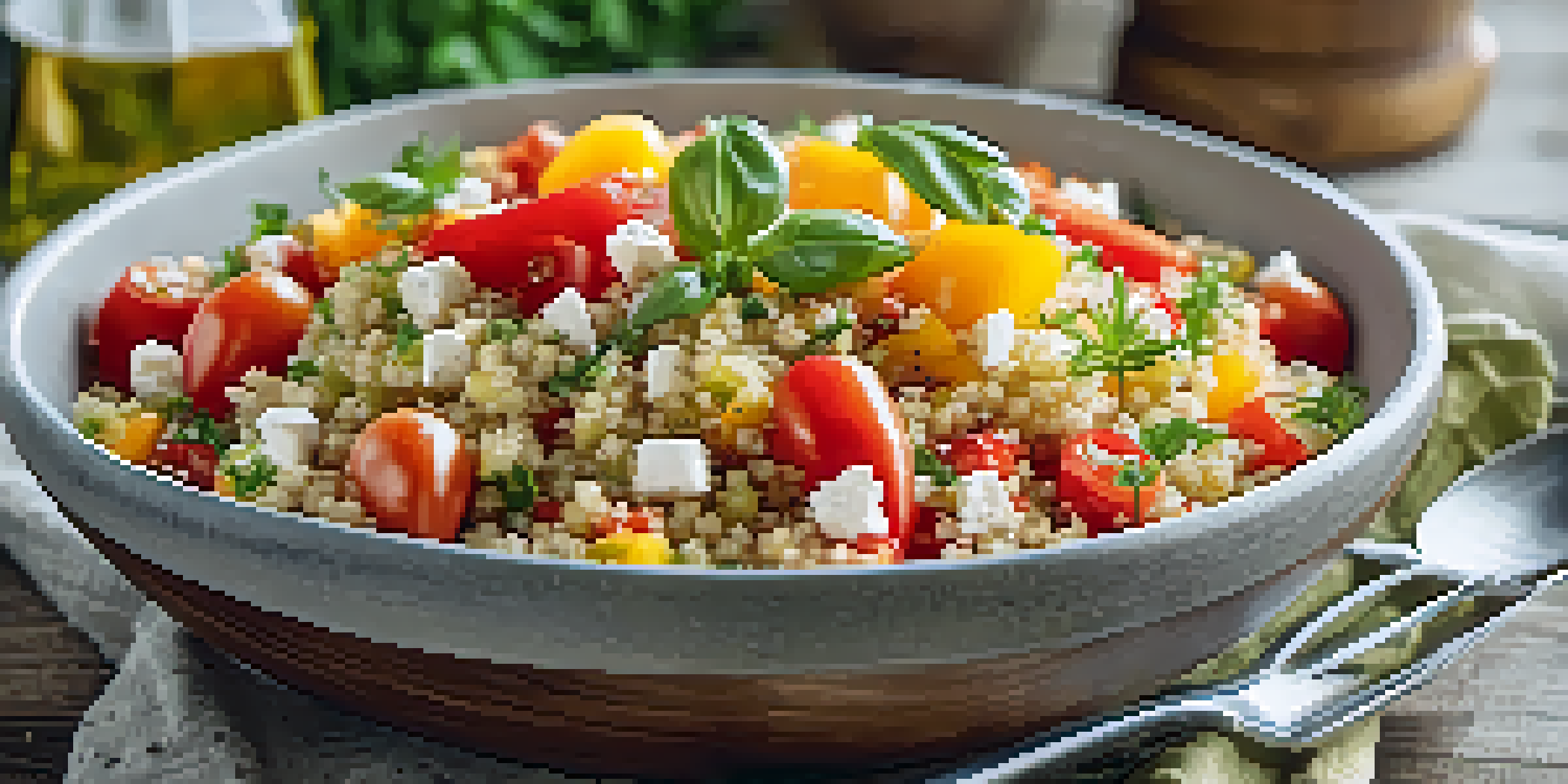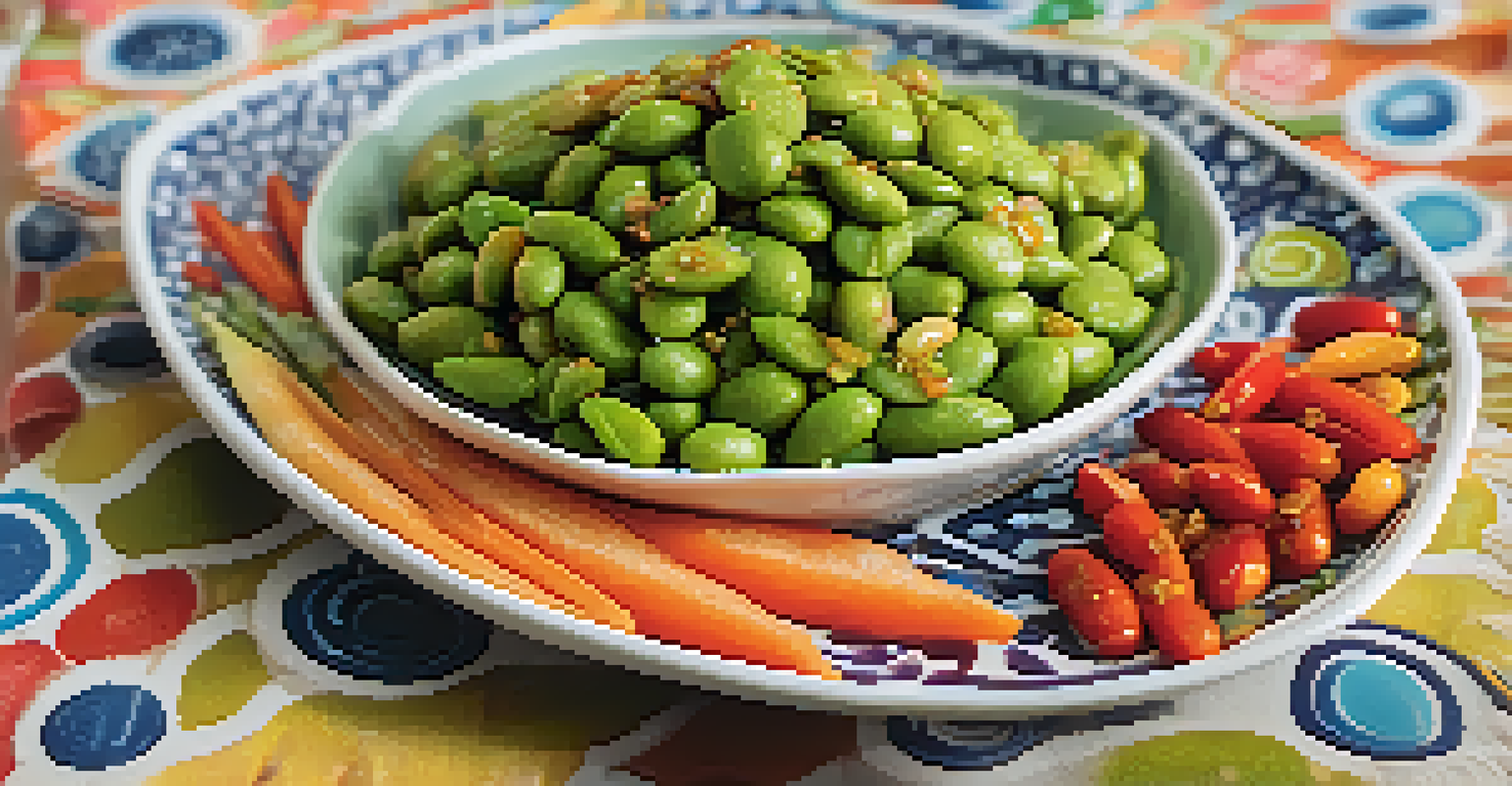Top Vegetarian Protein Sources for Growing Children

Understanding Protein Needs for Growing Kids
Children require protein to support their rapid growth and development. As they engage in various activities, protein helps in building muscles, repairing tissues, and producing important enzymes. It's essential to understand how much protein your child needs, which varies based on their age, weight, and activity level.
Let food be thy medicine and medicine be thy food.
For instance, a child aged 4-8 may need around 19 grams of protein daily, while those aged 9-13 need about 34 grams. This might sound like a lot, but incorporating protein-rich foods into their meals can make it manageable. By ensuring that your child receives enough protein, you’re laying the foundation for healthy growth.
As a parent, you might wonder how to meet these needs through a vegetarian diet. Fortunately, there are plenty of delicious and nutritious vegetarian protein sources that can easily be added to a child's diet.
Lentils: A Powerhouse of Plant Protein
Lentils are among the best vegetarian protein sources available. Packed with around 18 grams of protein per cooked cup, they are not only nutritious but also versatile. You can use lentils in soups, salads, or even as a meat substitute in tacos, making them a hit with kids.

Moreover, lentils are rich in fiber, which is beneficial for digestion. This means your child can enjoy a full feeling after meals, helping to prevent unhealthy snacking. Plus, they come in various colors, adding visual appeal to any dish.
Importance of Protein for Kids
Children need adequate protein for growth, muscle development, and overall health.
To make lentils more appealing, try pairing them with colorful vegetables or spices that your child enjoys. This can transform a simple dish into an exciting culinary adventure that they will love.
Chickpeas: The Versatile Legume
Chickpeas, or garbanzo beans, are another fantastic source of protein for children. With about 15 grams of protein per cooked cup, they can be enjoyed in many ways. Try them roasted as a crunchy snack, blended into hummus, or tossed in salads for a protein boost.
You are what you eat.
In addition to protein, chickpeas are rich in vitamins and minerals like iron and folate, which are crucial for growth. They also contribute to a balanced diet by providing healthy carbohydrates and fiber. This means they can keep your child energized throughout the day.
For a fun cooking activity, involve your children in making homemade hummus. Let them choose their favorite flavors, such as garlic, lemon, or even spices, to make it personalized and tasty.
Quinoa: A Complete Protein Source
Quinoa is often hailed as a superfood and for good reason—it’s a complete protein, meaning it contains all nine essential amino acids. With about 8 grams of protein per cooked cup, it is an excellent addition to any meal. Quinoa can be served as a side dish, added to salads, or used as a base for veggie bowls.
Not only is quinoa packed with protein, but it also provides fiber and important nutrients like magnesium and phosphorus. These nutrients support overall health and well-being, making quinoa a great choice for growing children. Its slightly nutty flavor can be a hit with kids, especially when prepared with their favorite seasonings.
Delicious Vegetarian Protein Sources
Foods like lentils, chickpeas, and quinoa offer nutritious and appealing protein options for vegetarian diets.
To make quinoa more appealing, consider cooking it in vegetable broth for extra flavor or mixing it with colorful veggies to create an eye-catching dish that’s hard to resist.
Greek Yogurt: Creamy and Protein-Rich
Greek yogurt is a creamy, delicious source of protein that kids often love. With approximately 20 grams of protein per cup, it’s an easy way to boost your child's protein intake. Serve it plain, or let your child add fruits, honey, or granola for a fun and nutritious snack.
In addition to protein, Greek yogurt contains probiotics that support gut health, which is essential for overall well-being. A healthy gut can lead to better digestion and improved immune function, making it a smart addition to your child's diet.
To make breakfast exciting, offer a yogurt parfait with layers of yogurt, fruits, and nuts. This not only looks appealing but also provides a balanced meal that can keep them full until lunchtime.
Nut Butters: Tasty and Nutritious Spreads
Nut butters, such as almond or peanut butter, are delicious ways to add protein to your child's meals. A two-tablespoon serving contains about 7-8 grams of protein, making it a great option for sandwiches, smoothies, or snacks. Spread it on whole-grain toast or mix it into oatmeal for added flavor and nutrition.
In addition to protein, nut butters provide healthy fats that are beneficial for brain development. They are also rich in vitamins and minerals, contributing to a well-rounded diet. Kids often enjoy their creamy texture and nutty flavor, making them a favorite among many.
Engaging Ways to Serve Protein
Involving kids in cooking and offering fun snacks can encourage them to enjoy protein-rich foods.
For a fun twist, try making homemade nut butter with your child. Let them experiment with different nuts or add a touch of honey for sweetness. This can turn a simple snack into an exciting activity!
Edamame: A Fun Snack Packed with Protein
Edamame, young soybeans, are not only a fun snack but also a protein-rich food that kids can enjoy. With around 17 grams of protein per cup, they are easy to prepare and can be served warm or cold. Kids can have fun popping the beans out of their pods, making it an interactive snack.
These little green gems are also packed with fiber and a variety of vitamins and minerals, making them a nutrient-dense option. They can be added to salads, stir-fries, or enjoyed as a standalone snack with a sprinkle of salt.

To introduce edamame into your child's diet, try serving it with a dipping sauce that they love. This can encourage them to try new foods while enjoying a healthy snack at the same time.
Tofu: A Versatile Protein Source for Kids
Tofu is a fantastic vegetarian protein source that can be incorporated into a variety of dishes. With about 10 grams of protein per half-cup, it’s a versatile ingredient that can be used in stir-fries, soups, or even smoothies. Tofu absorbs flavors well, making it easy to cook with different spices and sauces.
In addition to being high in protein, tofu is rich in calcium and iron, both of which are essential for growing children. These nutrients support bone health and overall development, making tofu a valuable addition to a vegetarian diet.
To make tofu more appealing, try marinating it in your child’s favorite sauce before cooking. You can also involve them in the cooking process, allowing them to experiment with textures and flavors that they enjoy.